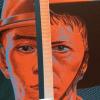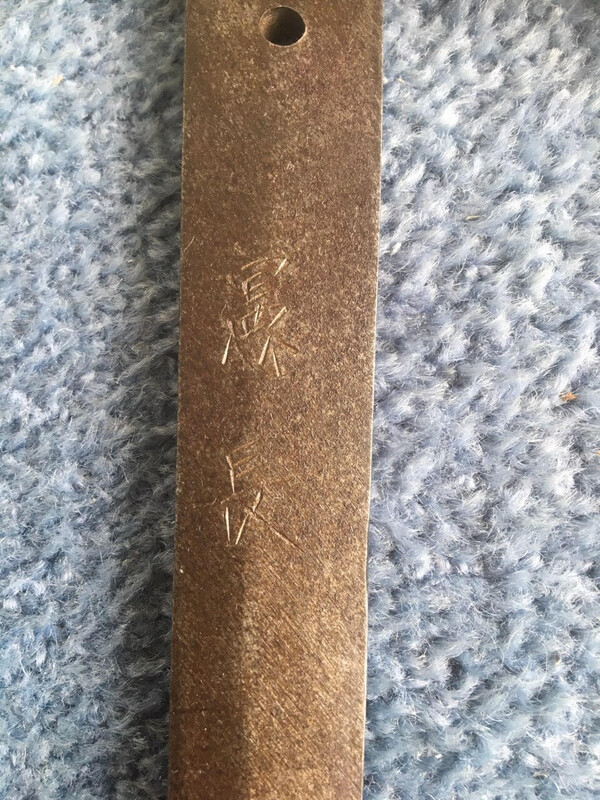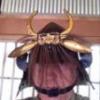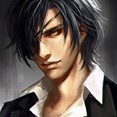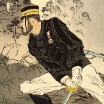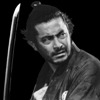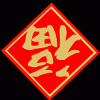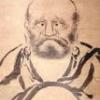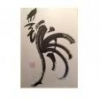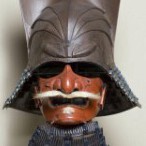Leaderboard
Popular Content
Showing content with the highest reputation on 11/16/2020 in all areas
-
4 points
-
Hi Marco, Usually fukure in the yakiba (hardened area of the blade) can't be repaired but even if the fukure is above the yakiba it is an expensive repair and is warranted only if the sword is very good quality or better. You don't mention what your sword is but unless it is special you should leave it be; don't go looking for a polisher. This isn't a fatal flaw but it is a large negative. A reputable dealer should have told you about this before you bought the sword. If a collector comes to me wanting to buy a sword, I tell him everything (the fukure would have been mentioned in my description; it is only fair. Not saying I'm a saint; this is how it should be. Grey4 points
-
It is heartening to find a sword where the painted assembly number on the nakago matches all the numbers on the fittings. Ohmura describes these swords as a "last stage type" and not a "normalized form". He explains how mixed fittings were used late in the war due to shortages. Some fittings are plain pressed metal, or from a parts bin of left overs. Even the ray skin "same" is replaced by a painted adhesive tape. This example is a 1944 NORINAGA. Due to years of wear and tear, the tzuka was re-wrapped in the original colour in Ohmura's Study. These swords are not as beautiful as the 98 or normalized RS, but are non the less interesting as a much needed WW2 sword for an officer at the front, added to this is their relative rarity.2 points
-
Will, your date (nengo) seems to be "皇紀二千六百二年九月日" (Kôki nisen roppyaku ni nen kyu gatsu hi). It's the imperial dating and reads "a day on the 9th month 2602" = September 1942 if I'm not totally off?! Mei not finished yet...2 points
-
PS Some people like their old armour to be just that, old, i.e. dull, chipped and rusty. Others like it all to be bright, shining and spotless. Most of us mill around in between these two extremes.2 points
-
Today I bought some flat black lacquered wooden Japanese trays from Aizu, and I noticed in the blurb some tips for keeping urushi in good condition. I am aware that chipped lacquer on iron armour is a different problem, but I thought to post here what they say anyway. 1. Do not leave lying in hot water for long periods of time. Clean with warm/hot water, wiping quickly, and remove any excess moisture with a dry cloth. 2. Avoid using coarse or abrasive cleansing powders. 3. If you leave the object in direct sunlight you may expect some color fade or discoloration, or twisting/warping in the body of the utensil. 4. When not in use, before storing away, remove any moisture with a soft cotton cloth, then with a dry cloth remove any foggy/cloudiness or oily areas, then wrap them individually in soft paper and place them in a box away from moisture. 5. If the lacquer smell bothers you, expose them in a well-ventilated place for a week or so and the smell will naturally disappear.2 points
-
JP, not really the right approach. One should only really focus on Nakago patina with ubu swords or swords which are slightly Suriage and there is still a Mei visible or there are evident traces of the original old part of the nakago remaining. All the rest is pseudo science as even if the sword is old, if it got shortened in early Edo, the Nakago will have a patina from early Edo and so on. There are cases where old swords had their Nakago “reworked” relatively recently. For instance, I had one such sword, which bore the Mei of an Oei Bizen smith but the NBTHK did not approve of it. The Mei was removed, the Nakago - repatinated professionally by the previous owner and the blade ultimately papered to Yoshioka Ichimonji. The Nakago work was done in the last 15-20 years, before my custodianship, but I had the full paper trail. If one looked at the patina, they would form the wrong views. Nakago and patina are their own area of expertise, where focus and attention need to be paid. One needs to look at the blade in its entirety and form a congruous view with the composite picture in mind.2 points
-
Well, I mean.. if they come here, at least they're taking a SMALL step in the right direction.2 points
-
2 points
-
2 points
-
1 point
-
1 point
-
Could be saka choji but I’m not too sure. By the way, Happy Birthday!!!! 💥🎂1 point
-
Takehisa was one of 8 smiths whose blades often have the W/M stamp: Research from collectors on the Nihonto Message Board (www.militaria.co.za/nmb/19390-the-mysterious-w-stamp/) have revealed ‘W’ stamps on the following blades: Type 19 sabre; Type 95s made by Ijima for Kokura & Tokyo 1st Arsenal; Mantetsu; Kaneoto (with Seki stamp); Haruhisa; Kokima Kanenori; Tenshin; Takehisa; Yoshiharu; and Yoshitani. We don't know why it just shows up on these blades. We believe it is a "midway inspection".1 point
-
I agree with Dale. The sixth generation Takahashi-Kinai was named in 1809 and died in 1821. The two Aoi leaf openwork tsuba are said to have been made by him. However, there are so many tsuba with Mei in the 6th generation that Japanese collectors call them "丁稚記内 (apprentice-kinai)" mass-produced by apprentices. They include foundry products and replicas of the new era, but if you follow the rules of kinai, they don't worry about the details.1 point
-
1 point
-
That is a tricky conversation....I doubt that too many blades are restored and end up worth the cost; however, as the caretaker of a piece of historical functional art, sometimes it is worth doing something to restore them to their proper condition.1 point
-
Oof. That is rough that you were not informed of such a cosmetic defect. Perhaps if you're not in too much love with the blade, you can seek to return it and find one without?1 point
-
Chris, they both look like reproductions to hang in the bar. The excessive wild hada is one sign, but also they usually have cheaper tsuka ito of a different weave, plus the binding crossover is usually all one way, and not alternate overlap. Mal1 point
-
1 point
-
1 point
-
Michael, yes this is Echizen Kinai very late design, but the mei looks a little "clunky" (quickly cut). On website Nihonto-no-Bi is a comprehensive summary of Kinai group for comparison http://www.users.on.net/~coxm/?page=TsubaIII Mal1 point
-
1 point
-
As David wrote, Kinai, left side reads Kinai saku (made), right side Echizen (no) Ju or 'living in Echizen (province)'1 point
-
1 point
-
1 point
-
Hi Mal. Thanks for your kind words....yes detailed (you should see my notes!) but I did it as we owe it to the sword community to leave as detailed information as possible behind us...as you have done with your very meticulous publications...which I use still. So a big thank you to you. (speaking of your Mino book...you must have noticed my comments/guess on sword #10 in my article...maybe Aizu 11 gen Kanesada (or not) haha). Actually, I mean to comment of the topic here about the two holes in a WWII tang, I have to admit that I have seen this a number of times, but never thought to check for a kizu correction machi okuri job as the reason...so thanks for that observation...also this discussion...never too old to hear fresh ideas. Regards all,1 point
-
This is revised chapter 62, the second part of chapter 26, Overview of the Sin-to. This chapter explains the Shin-to characteristics and picturesque Hamon. Please click the link above to go to this chapter directly. https://studyingjapaneseswords.com/2019/08/19/63part-2-of-27overview-of-shin-to 新刀)/ Thank you Yurie1 point
-
I think its the guy that Stephen mentions, Takenori, but the mei on this sword is (三州) 宮路山麓住藤原武則作 (Sanshū) Miyaji Sanroku Fujiwara Takenori saku The "Sanshū" bit is covered up by the habaki. Take a look at another sample of this mei at the link below http://kako.nipponto.co.jp/swords3/KT326751.htm1 point
-
Hi Jiri, As per Steve's translation apart from the bit about the two body cut which reads "Ryou kuruma dodan barai" (these characters: 両車土壇払). The "two wheels" cut (through the body at the hips) and entering the earth mound (below). This drawing illustrates the test cut (number 10):1 point
-
0 points
-
This one was sold one hour ago for 847 EUR - around 1.000 Dollar. 🤣 https://www.egun.de/market/item.php?id=127763660 points
This leaderboard is set to Johannesburg/GMT+02:00








